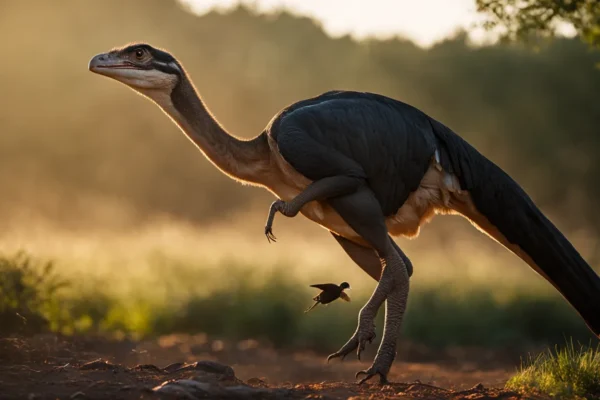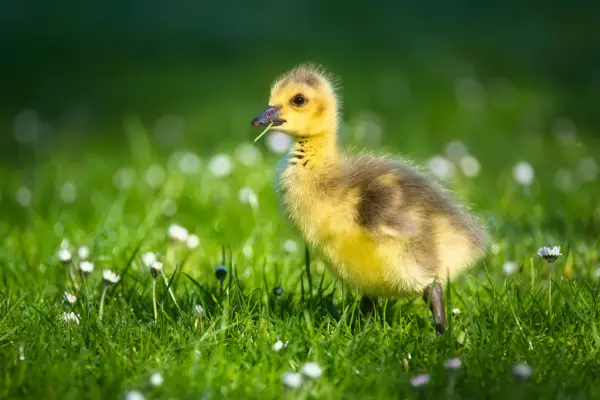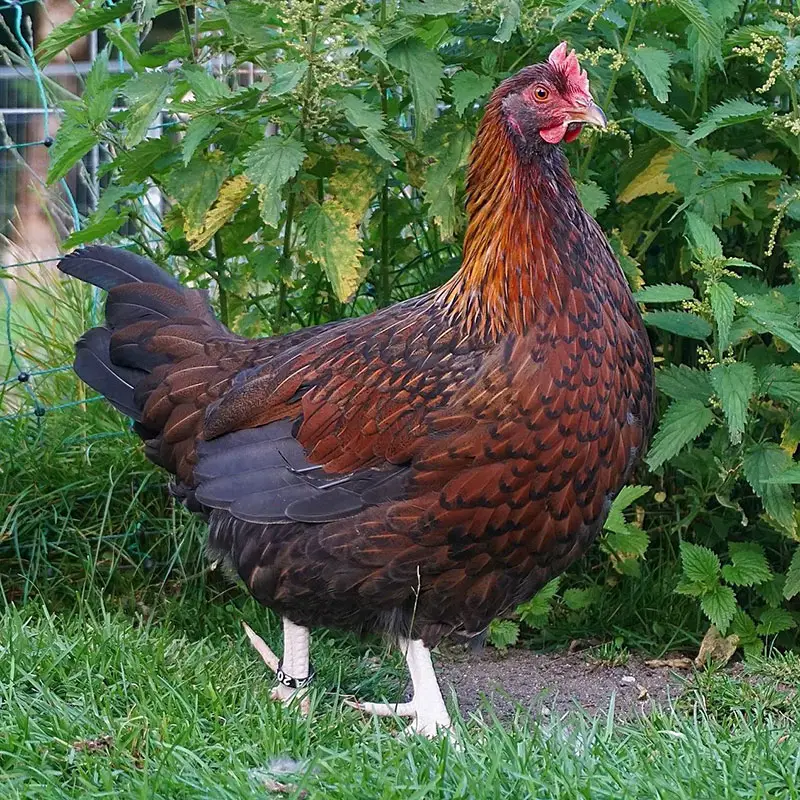Eagles, renowned as some of the sky’s most sizeable and formidable avian creatures, have earned the moniker “birds of prey” owing to their graceful demeanor, well-calibrated aggression, and exceptional visual acuity. They exhibit remarkable hunting prowess, accentuated by their impressively expansive wingspan. Additionally, eagles serve as a tangible embodiment of ideals like freedom, potency, and transcendence on a global scale.
Here are 65 fascinating facts about eagles that shed light on their captivating nature:
List of 65 Amazing Facts About Eagles
- The Extinct Haast’s Eagle: The Haast’s eagle, now extinct, was once the largest eagle species. It existed on New Zealand’s South Island and preyed on the flightless moa, which also went extinct likely due to human impact.
- Powerful Grip: Eagles possess a grip up to 10 times stronger than humans, making them formidable opponents. They can lift prey weighing a few pounds and, in the case of larger eagles, up to 5 pounds.
- Diverse Species: With over 60 species, eagles have found their niche in various regions across the world. From fish eagles to the iconic Bald Eagle, their adaptations are diverse.
- Nesting Habits: Some eagles, like the Golden Eagle, build their nests atop cliffs, providing protection and proximity to food sources. The nests can be massive, as seen in the Bald Eagle’s 13-foot-deep, 1.1-ton structure.
- Symbols of Freedom: Eagles symbolize freedom and courage in cultures worldwide. Their representation in flags and religious texts underscores their significance in conveying messages of power and hope.
- Incredible Eyesight: Eagles boast eyesight up to 8 times stronger than humans, capable of spotting prey from several kilometers away. This precise vision is a key asset in their hunting strategy.
- Misleading Name: The Bald Eagle is named for its white-feathered head, not for being bald. Its moniker originates from “piebald,” meaning white-headed.
- Formidable Beaks: Eagles sport strong, hooked beaks perfect for tearing through flesh, capturing prey, and maintaining their place in the food chain.
- Cunning and Intelligence: These hunters employ clever tactics, including blinding their prey by diving in front of the sun. Their tactical thinking and cunning contribute to their hunting prowess.
- Eaglets and Fledging: Eaglets, as young eagles, endure a phase of learning to fly. Although their initial flights are challenging, eaglets persist in mastering this skill, often finding landings the trickiest.
- Diverse Diet: Eagles have a varied diet, including fish, crabs, reptiles, amphibians, and even live prey. They can survive for several weeks without food.
- Parental Care: Female eagles lay 1-3 white eggs each spring, with an incubation period of around 35 days. Both male and female eagles share parenting responsibilities, illustrating their commitment to their young.
Collective Noun: A group of eagles is known as a “convocation,” underscoring the sense of community these birds often exhibit.
- Protected Feathers: Picking up a Bald Eagle feather without a permit is illegal in the USA, despite the bird no longer being endangered. This law reflects the need for conservation efforts.
- Balance through Feathers: Eagles lose feathers on opposite sides to maintain balance, exemplifying their keen adaptation to their surroundings.
- Ravenclaw Emblem: The house emblem of Ravenclaw in the Harry Potter series is an eagle, symbolizing wisdom, wit, and learning.
- Monogamous Bonds: Eagles mate for life, nurturing their young together. Their loyalty and commitment highlight their cooperative nature.
- Impressive Wingspans: The Harpy Eagle and Philippine Eagle boast wingspans of up to 8 feet, exemplifying their mastery of flight.
- Eagle Nests: Constructed from sticks, moss, plant stalks, seaweed, and lichens, eagle nests reflect their dedication to providing safe homes for their offspring.
- Golden Eagle Dominance: The Golden Eagle is among the most common eagle species, often found in the Northern Hemisphere with its distinctive plumage.
- Exceptional Neck Mobility: Eagles can rotate their heads up to 210 degrees, an adaptation supported by their unique neck structure.
- Adaptable and Powerful: Eagles belong to the family Accipitridae, known for their strong beaks, sharp talons, and exceptional eyesight. These features collectively make them formidable and efficient predators.
- Global Distribution: Eagles inhabit various regions worldwide, excluding Antarctica. Their adaptability allows them to thrive in diverse environments, ranging from the freezing Arctic tundra to the lush tropical rainforests.
- Symbol of the USA: The bald eagle, with its majestic presence, serves as the national bird and emblem of the United States. Its significance is deeply ingrained, dating back to its inclusion on the country’s official seal in 1782.
- Apex Predators: Positioned at the pinnacle of the food chain, eagles are apex predators. They display remarkable hunting skills, preying on a range of animals including fish, mammals, and other birds.
- Species Diversity: The world is home to over 60 distinct species of eagles. Each species boasts unique traits and adaptations suited to their specific habitats and niches.
- The Mighty Harpy Eagle: The Harpy eagle holds the title of the world’s largest eagle species. Renowned for its distinctive appearance and powerful talons capable of exerting a force of up to 700 pounds per square inch.
- Longevity in the Wild: Eagles can live for up to 30 years in their natural habitats. Their robust health and ability to adapt contribute to their extended lifespans.
- Impressive Weight: With the potential to weigh up to 15 pounds, eagles are among the largest birds of prey globally.
- Expansive Wingspan: Eagles can exhibit wingspans reaching up to an impressive 7 feet. This remarkable span allows them to navigate the skies with grace and agility.
- Formidable Talons: Equipped with strong and sharp talons, eagles can generate an astonishing force of up to 400 pounds per square inch. These talons play a pivotal role in hunting and capturing prey.
- Acute Eyesight: Eagles are renowned for their keen eyesight, which surpasses that of humans. With vision ranging from four to eight times more potent, they can spot prey from considerable distances and make precise dives.
- High-Flying Explorers: Eagles can ascend to altitudes of up to 10,000 feet. This elevation provides an advantage in scanning expansive landscapes for prey and potential threats.
- Swift Divers: During hunting dives, eagles can achieve speeds of up to 120 miles per hour. This impressive velocity ensures successful prey capture.
- Lifelong Bonds: Eagles are monogamous creatures, forming enduring pair bonds that persist throughout their lives. They work in tandem to raise their young and nurture their nests.
- Strategic Nesting: Eagles construct their nests in elevated locations such as cliffs, tall trees, and even man-made structures. These nests offer safety and security for eagles and their offspring.
- Size Distinction: Female eagles generally exhibit larger proportions than their male counterparts. This disparity enables them to tackle larger prey and enhance the protection of their young.
- Varied Diet: Displaying opportunistic feeding behavior, eagles consume a diverse array of prey, including fish, snakes, rabbits, and fellow birds. This dietary flexibility contributes to their survival across different environments.
- Lethal Talon Technique: Eagles deploy their powerful talons uniquely to dispatch prey. The crushing force exerted by their talons can break bones and quickly incapacitate prey.
Rare and Endangered Beauty: The Philippine eagle stands as a rare and endangered species, notable for its captivating appearance and robust wingspan.
- Symbolic Impact: Beyond the natural realm, eagles have assumed symbolic significance in heraldry. They embody traits such as strength, power, and liberty and are featured on flags, coats of arms, and emblems globally.I apologize for the previous confusion. Thank you for providing the additional points. Here’s the continuation from point 41:
- Global Distribution of Golden Eagle: The Golden eagle holds the title of the most widely distributed eagle species across North America, Europe, Asia, and Africa. Its adaptability enables it to thrive in various environments.
- Eagles and Human Interaction: Unfortunately, some eagle species are hunted by humans for their feathers. These feathers are utilized in traditional ceremonies and crafts. Such practices have contributed to population declines in certain eagle species.
- Cultural Significance: In certain cultures, eagles are attributed with healing powers and are employed in traditional medicinal practices. Additionally, they hold spiritual significance and are integrated into ceremonies and rituals.
- African Fish Eagle’s Distinctive Call: The African fish eagle is renowned for its distinct call, which resembles a loud, quavering laugh. This call carries over significant distances and is a recognizable feature of many African landscapes.
- Eagles in Art, Literature, and Mythology: Throughout human history, eagles have been prominently featured in works of art, literature, and mythology. They symbolize attributes such as power, freedom, and wisdom.
- Bald Eagle’s Recovery: The bald eagle faced near-extinction in the 1960s. However, through dedicated conservation efforts, this iconic bird has made a remarkable recovery. Today, it stands as one of the most recognizable symbols of the United States.
- Adaptable Habitat Preferences: Eagles are remarkably adaptable and can thrive in diverse habitats, ranging from deserts to rainforests. They can even adapt to urban environments like cities and suburbs.
- Majestic Martial Eagle: The Martial eagle, indigenous to Africa, reigns as the continent’s largest eagle. It’s acclaimed for its formidable wings and sharp talons, attributes that make it a proficient predator.
- Eagles in Pop Culture: Their majestic and fierce qualities have established eagles as beloved symbols in sports and entertainment. They frequently serve as mascots for sports teams and are prominently featured in movies and TV shows.
- Steller’s Sea Eagle: The Steller’s sea eagle, a magnificent species, claims the distinction of being one of the world’s largest eagles. It’s exclusively found in Russia and possesses remarkable hunting prowess.
- Keen Hearing: Eagles boast exceptional hearing capabilities, which facilitate prey detection. Their ability to hear sounds from considerable distances aids their hunting strategies.
- Crested Eagle’s Unique Crest: The Crested eagle, residing in South America, captivates with its distinctive crest of feathers atop its head. This bird showcases striking features and formidable hunting skills.
- Food Theft Among Eagles: Eagles are known to pilfer food from other birds and animals. Their opportunistic nature prompts them to capitalize on available opportunities for a meal.
White-Tailed Eagle’s Range: The White-tailed eagle is distributed throughout Europe and Asia. Its notable size and sharp talons position it as a formidable predator.
- Impressive Lifespans: Some eagle species exhibit exceptional lifespans, with certain individuals living up to 50 years in captivity. Their robust health and adaptability contribute to their extended longevity.
- Eagles in Entertainment: Eagles are frequently incorporated into popular culture, gracing the screens of movies, TV shows, and video games. They embody qualities of strength and power.
- Harpy Eagle’s Mythological Inspiration: The Harpy eagle derives its name from a mythological creature that combined features of a woman and a bird. This species, inhabiting South and Central America, stands out for its appearance and hunting prowess.
- Eagles in Falconry: Eagles have played a role in falconry for millennia and are prized by hunters. Trained to hunt various prey, they participate in hunting competitions.
- African Crowned Eagle’s Hunting Prowess: The African crowned eagle is recognized for its potent grip, enabling it to capture and subdue monkeys and other primates. This eagle species thrives in sub-Saharan Africa.
- Cultural Significance: In numerous indigenous cultures worldwide, eagles hold high esteem and are often deemed sacred. They become integral elements of artwork and traditional ceremonies.
- Binocular Vision: Eagles possess highly developed binocular vision, allowing them to focus on distant objects accurately. Their retinas contain numerous cone cells, and a specialized area called the fovea enhances their visual acuity, aiding in hunting.
- Juvenile Plumage: Juvenile eagles, particularly bald eagles, display distinct plumage compared to adults. Their mottled brown and white feathers differentiate them until they develop mature plumage over several years.
- Communication Modes: Eagles communicate through a range of vocalizations, including calls, songs, and screeches. Additionally, body language, such as postures and displays, conveys messages about their intentions and emotions.
- Efficient Soaring and Gliding: Eagles excel at soaring and gliding, conserving energy as they search for prey or travel long distances. Utilizing thermal updrafts, they achieve altitude without continuous flapping, optimizing energy usage.
Frequently Asked Questions
Do Eagles Cry?
No, eagles don’t cry. They make high-pitched sounds similar to weak screams. Often, the sounds of other birds, like the Red-Tailed Hawk, are used in movies over images of eagles.
Have They Ever Been Endangered?
Yes, eagles were endangered in the past. In 1978, they were listed as an endangered species due to hunting for their feathers. However, thanks to conservation efforts, their numbers have increased, and they are no longer classified as endangered. There are now over 9,800 nesting pairs in the USA.
Do Eagles Ever Attack Humans?
It’s very rare for eagles to attack humans. They can’t lift prey heavier than a couple of pounds, so they wouldn’t be able to lift a human. As long as humans don’t disturb their nests, eagles are unlikely to bother them.
Where do Eagles Sleep?
Eagles usually sleep perched on a branch, not in their nests. They only use their nests when raising young. They have a special mechanism in their foot that allows them to grip branches while sleeping.
How Long Does the Bald Eagle Live?
In the wild, the Bald Eagle usually lives between 20 and 30 years, while in captivity, it can live up to 50 years. After they reach 5 years old, their age can’t be determined by plumage.
Why is the Bald Eagle the Symbol of America?
The Bald Eagle symbolizes strength and power. Since it was believed to be unique to the continent, it became a fitting emblem for the USA.
How do You Tell an Eagle from a Vulture?
Eagles and vultures can be distinguished by their flight patterns. Bald Eagles keep their wings almost flat when soaring, while Turkey Vultures fly with their wings in a “V” shape.
Can Eagles Swim?
Eagles can’t swim but can paddle. They use this skill to bring large fish to shore before eating them.
Do Eagles Migrate?
Some eagles migrate before colder weather arrives, but not all. Many fly south to escape the cold, while some remain in cold regions. Migration decisions depend on factors like age and food availability.
Are Male and Female Eagles the Same Size?
No, female eagles are usually around 30% bigger than males. This size difference is common in the bird world. It’s believed that larger females can protect their young better, while smaller males are more agile hunters.






